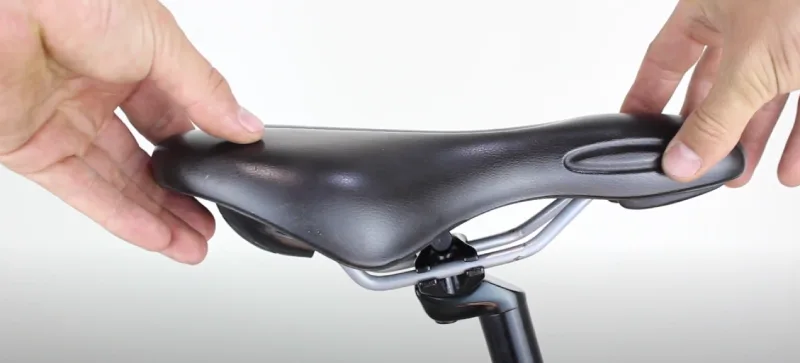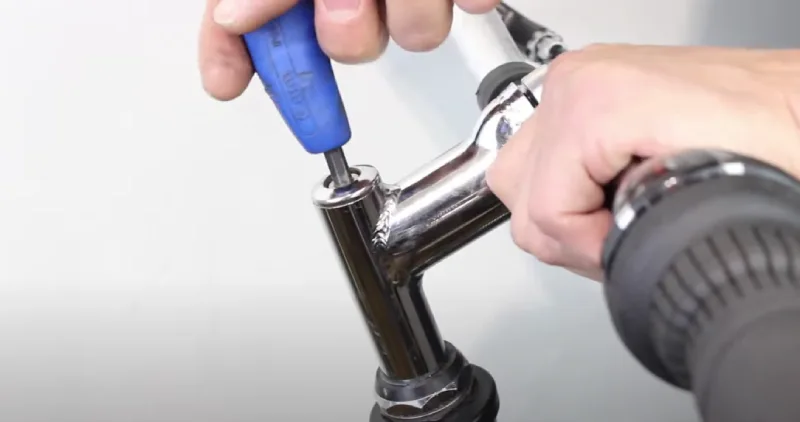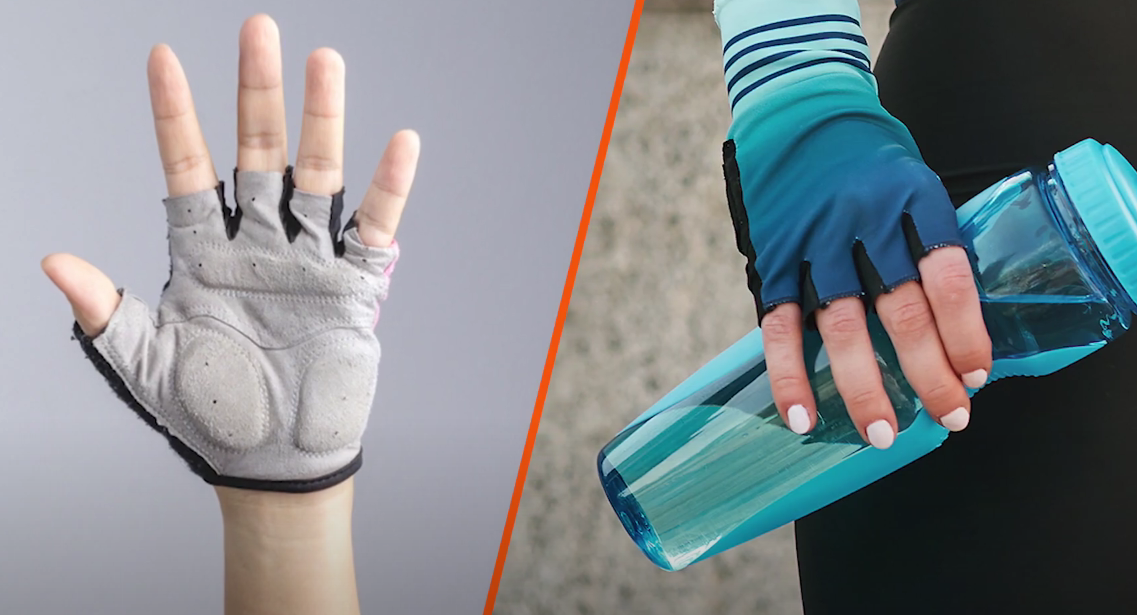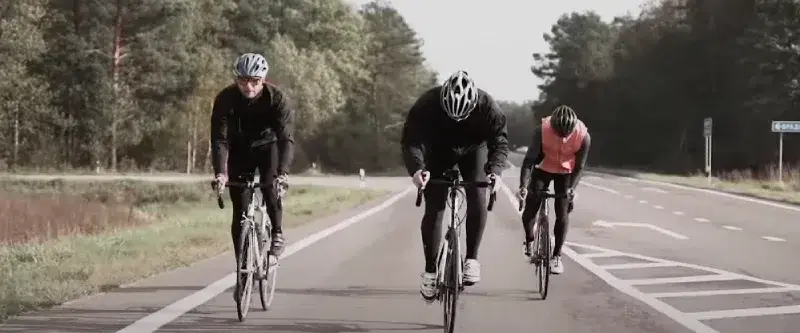Address saddle discomfort, bike fit issues, and hand numbness to improve cycling comfort. Use padded gear like shorts and gloves, ensure proper bike fit, and adjust handlebar height for better comfort. Modify handlebar and saddle positions to prevent strain, wear correct cycling shoes, and maintain your bike for a smoother ride.
To make cycling more comfortable, invest in a well-fitted saddle and padded cycling shorts for reduced soreness. Ensure proper bike fit to alleviate muscle strain and consider protective gear for varying weather conditions. Implementing these adjustments can enhance your cycling experience significantly.
This blog post will discuss ways to make cycling more comfortable. From equipment to proper form, we’ll provide tips and tricks to help you enjoy your rides to the fullest.
Key Takeaways
- Cycling comfort is vital for an enjoyable biking experience, and certain factors such as bike fit, saddle type, apparel, handlebar setup, stem, posture, gloves, handlebar tape or grips, and regular bike maintenance play critical roles.
- Proper bike fit prevents discomfort and injuries, enables efficient riding, and can be facilitated by professional bike fitting services. Saddles vary with the type of riding and finding the right one that suits your physique can make a big difference. Cycling shorts with built-in chamois pads provide cushioning and reduce chafing.
- Handlebar shape and positioning impact posture, control, and hand comfort, and different styles, including drop bars, flat bars, and riser bars, offer unique benefits. The bike’s stem, which connects the handlebars to the frame, can alter your riding position, thus influencing comfort.
- Regular bike maintenance, including checking tire pressure, brake adjustments, and chain lubrication, ensures a comfortable ride and prevents mechanical issues.
How To Make Cycling More Comfortable: 10 Best Ways
Cycling discomfort is a common issue, especially for beginners who may feel intimidated by the challenges of riding. Whether you’re new to cycling or have some experience, it’s crucial to focus on comfort for an enjoyable biking experience. Here are ten tips to make your cycling adventures more comfortable and rewarding.
Adjust Your Bike Fit
One of the most important things for a comfortable ride is making sure your bike fits you well. A good fit helps you ride better and prevents pain or injuries.
Why Proper Bike Fit Matters
- Prevent Discomfort: When your bike fits you, it prevents parts of your body from hurting, including your back, knees, and wrists.
- Ride Efficiently: A well-fitted bike lets you pedal without wasting energy.
Benefits of Professional Bike Fitting Services
- Personalized Adjustments: Experts ensure the seat height, handlebar position, and other parts are right for you.
- Better Performance: Riding a bike that fits well helps you go faster and with less effort.
- Injury Prevention: Proper adjustments help you avoid common problems like sore knees or a stiff back.
Saddle Type and Finding the Right One

A good saddle is crucial for a comfortable ride. Here’s why upgrading your saddle can make a big difference.
Types of Saddles
Different types of saddles are designed for different riding. Consider these options:
- Racing Saddles: These are light and narrow, ideal for speed but may offer little comfort.
- Mountain Bike Saddles: These have extra padding to handle rough trails.
- Cruiser Saddles: Wide and cozy, perfect for short, easy rides.
- Touring Saddles: Balanced for long rides, offering both comfort and performance.
Finding the Right Saddle
Choosing the right saddle means finding one that fits your body well. Here’s how to do it:
- Try Before You Buy: Sit on different saddles to see which feels best.
- Measure Your Sit Bones: Knowing the width of your sit bones helps you pick the right saddle.
- Adjust the Saddle: Ensure your saddle is set at the correct height and angle for your body.
Real Leather Saddles
For long-distance comfort, consider a real leather saddle like those from Brooks. Here’s what makes them special:
- Durable: They last a long time and get better with age.
- Comfortable: They mold to your body over time, providing personalized comfort.
- Breathable: Leather allows air to flow, keeping you cooler during rides.
Wear Proper Cycling Shorts
A comfortable ride requires cycling shorts. They come with a built-in chamois pad that provides cushioning and reduces chafing. Here’s why they matter:
- Cushioning: The chamois pad in cycling shorts cushions between you and the bike seat. This helps reduce pressure on your sit bones, making long rides more comfortable.
- Reduce Chafing: The material and design of cycling shorts minimize friction, which helps prevent painful chafing during extended rides.
- Moisture-Wicking: Quality cycling shorts are made from materials that wick moisture away from the body.
Types of Fit Recommended
Choosing the right cycling shorts can make a big difference. Here are some recommendations:
- Fit Types: Ensure the shorts fit snugly but not too tight. A good fit prevents the shorts from bunching up or shifting during your ride.
Change Your Handlebar Setup

The handlebars on your bike are significant for comfort. The shape and position of your handlebars affect how you ride.
Impact of Handlebar Shape and Positioning
Different handlebar shapes and positions can:
- Improve Posture: Proper handlebar setup helps you sit properly, reducing back and neck pain.
- Enhance Control: Good handlebars give you better control over your bike, making your ride safer.
- Increase Hand Comfort: The right handlebars can help you find a comfortable spot for your hands, reducing pressure and pain.
Trying Different Handlebar Styles
There are several styles of handlebars you can try, each offering unique benefits:
- Drop Bars: These curved handlebars let you place your hands differently. This can make long rides more comfortable by reducing tiredness.
- Flat Bars: These straight handlebars help you sit more upright. They are good for short or casual rides and offer great control, especially in traffic.
- Riser Bars: These handlebars rise above the bike’s frame, giving you an even more upright position. They are often used on mountain bikes and are good for off-road trails.
Optimizing Control Positioning and Lever Reach
Cycling is a fun way to exercise and explore. But, staying comfortable on the bike is very important. One way to do this is by positioning your bike controls correctly and adjusting the lever reach.
Prevent Hand and Wrist Strain with Proper Control Positioning
Your hands are always in contact with the handlebars while cycling. If they’re not positioned right, it can lead to pain.
- Keep Wrists Straight: Make sure your wrists are in line with your forearms. This reduces strain.
- Adjust Handlebar Height: Your handlebars should not be too high or too low. An improper height can cause wrist pain.
- Use Padded Grips: Handlebar tape or grips with padding can absorb shock and make your ride smoother.
Adjust Lever Reach for Better Ergonomics
Lever reach is how close or far your brake and gear levers are from the handlebars. Adjusting them properly can make riding easier.
- Check the Distance: When you grab the brakes, your fingers should easily wrap around the lever without stretching too much.
- Use the Adjustment Screws: Most new bikes have small screws on the brake levers. Turn these screws to bring the levers closer or move them farther away.
- Test Your Adjustments: Take a short ride to see if everything feels good after making changes. Make more adjustments if needed.
Switch Your Stem
Making your cycling experience more comfortable can sometimes be as simple as switching your stem. The stem, which connects your handlebars to the frame, determines your ride position. Here’s how adjusting it can make a difference.
Role of the Stem in Altering Your Ride Position
The stem is a small but important part of your bike. It connects the handlebars to the bike frame. Changing the stem can change how you sit on the bike. This can make riding more comfortable.
Different Lengths and Angles of Stems
Shorter Stems: Choosing the right stem length can significantly improve your cycling posture and reduce discomfort. Here’s how short stems can help.
- Brings the handlebars closer to you.
- Helps you sit more upright.
- Reduces strain on your back and neck.
Longer Stems: You can choose different stems to your liking. Here’s some benefits of selecting longer stems.
- Pushes the handlebars away from you.
- Makes you lean forward more.
- Helps if you prefer a more aerodynamic position.
Angled Stems: Selecting the right stem is essential for your cycling. Here are benefits of angled stems.
- Can lift the handlebars higher or lower.
- Raising the handlebars can ease pressure on your hands and wrists.
- Lowering the handlebars can help if you want a more aggressive riding position.
Focus on Your Posture
Maintaining a good posture while cycling can greatly improve your comfort. It helps reduce strain and prevents injuries.
Relaxed Posture
A relaxed posture is essential for a comfortable ride. When you are relaxed, your body will not stiffen up, and you can cycle longer without feeling sore.
- Drop Your Shoulders: Keep your shoulders down and avoid hunching them up. This helps prevent tension in your neck and shoulders.
- Relax Your Grip: Hold the handlebars lightly. A firm grip can cause stiffness in your arms and shoulders.
Use Padded Gloves

Padded gloves are an essential accessory for cyclists. They provide comfort and enhance grip on the handlebars.
Benefits of Padded Gloves
- Reduce Pressure on Hands: Padded gloves help distribute the pressure evenly across your hands, reducing the risk of numbness or pain during long rides.
- Absorb Road Vibration: They act as a cushion, absorbing the shocks and vibrations from the road, resulting in a more comfortable ride.
- Improve Grip: The padding and materials used in these gloves can improve your grip, preventing your hands from slipping off the handlebars, especially when they get sweaty.
Materials and Brands for Comfort
When choosing padded gloves, consider the following materials and brands known for their comfort:
- Gel Padding: Offers excellent shock absorption and is ideal for long rides.
- Foam Padding: Lightweight and provides decent cushioning for short to medium distances.
- Mesh Fabric: Breathable and keeps your hands cool, perfect for hot weather conditions.
Some popular brands to consider are:
- Giro: Known for their ergonomic designs and high-quality materials.
- Pearl Izumi: Offers a range of gloves with advanced padding technology.
- Specialized: Focuses on comfort and durability, making them a great choice for avid cyclists.
Invest in Quality Handlebar Tape or Grips
Comfortable handlebars are essential for a pleasant ride. High-quality handlebar tape or grips can improve your cycling experience by providing better cushioning and grip.
Benefits of Good Handlebar Tape or Grips
- Enhanced Cushioning: Quality handlebar tape or grips offer extra padding, which helps absorb shock and reduce hand fatigue. This is particularly important on long rides or rough terrains.
- Improved Grip: Secure grips prevent your hands from slipping, even when they are sweaty. This ensures better control and safety while cycling.
- Reduces Vibrations: Good tape or grips can minimize road vibrations, improving your ride.
Recommended Materials
Choosing the right material for your handlebar tape or grips will make a big difference in your comfort:comfort:
- Gel Padding: Gel-infused tape provides excellent cushioning and is ideal for absorbing shocks from rough roads.
- Cork: Cork handlebar tape is known for its natural feel and good vibration dampening properties. It’s also lightweight and easy to wrap around the handlebars.
- Leather: Leather grips or tape offer a classic look and feel. They tend to be more durable and provide a comfortable grip once broken in.
- Foam: Foam grips are soft and offer good cushioning. They are budget-friendly and can be easily replaced when worn out.
Regular Bike Maintenance
Keeping your bike in good working order ensures a comfortable ride. Regular maintenance prevents mechanical issues that can cause discomfort and even accidents. Here’s how you can keep your bike in top shape:
Tire Pressure
- Check regularly: Ensure your tires are properly inflated before every ride. Low tire pressure can make pedaling harder and riding bumpy.
- Use a gauge: Invest in a good tire pressure gauge to get accurate readings.
- Follow recommendations: Check the side of your tire for recommended PSI (pounds per square inch) and stick to it.
Brake Adjustments
- Test your brakes: Before heading out, squeeze your brake levers to make sure they engage properly.
- Adjust as needed: If your brakes feel loose or don’t stop you quickly, adjust them according to the user manual.
- Replace worn parts: Worn brake pads should be replaced immediately to avoid accidents.
Chain Lubrication
- Keep it clean: Use a cloth to wipe down your chain after every ride.
- Lubricate regularly: Apply a suitable bike chain lubricant every few weeks, especially if you ride often.
- Check for wear: A worn-out chain can slip and cause discomfort. Wearing it out should be replaced.
Conclusion
With these tips in your toolkit, you’re well on your way to more comfortable and enjoyable rides. Remember, your bike should feel like an extension of yourself, not something you need to battle against. Minor adjustments in your setup, gear, and habits can greatly impact your riding experience. So, tweak that saddle, adjust those handlebars, and invest in some quality gear, your body will thank you, and your love for cycling will grow even stronger.
FAQs
How Can I Cycle Without Pain?
Selecting the correct saddle, ensuring a proper bike fit, and donning a quality chamois can significantly reduce chafing, friction, and other discomforts women encounter while cycling.
Fortunately, saddle pain, including sores, is entirely preventable in nearly all cases.


